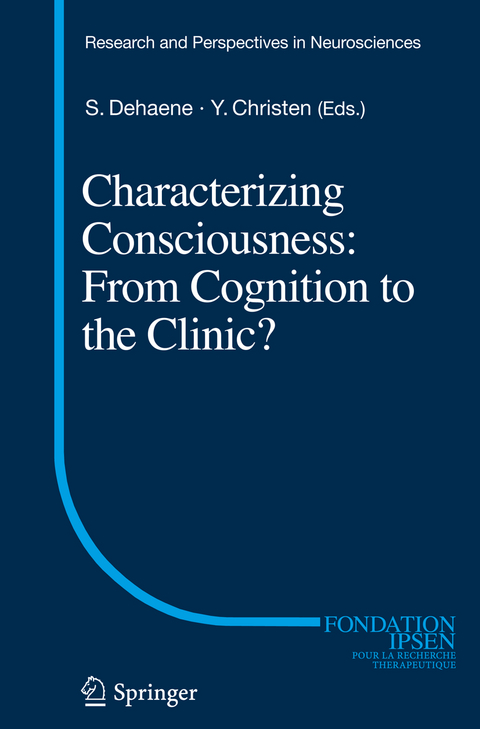Characterizing Consciousness: From Cognition to the Clinic?
Springer Berlin (Verlag)
978-3-642-18014-9 (ISBN)
A major challenge still confronts these novel empirical and theoretical proposals: will they be able to help clinicians confronted with patients in coma or vegetative state? Is a given patient conscious? Will he ever recover consciousness? And what will be his cognitive state if he does? Brain stimulation paradigms, whether cortical or in deep-brain nuclei, can alter the state of consciousness and may improve communication in some 'minimally conscious' patients.
Stanislas Dehaene, geb. 1965, Mathematiker und Psychologe, ist einer der weltweit führenden Kognitionswissenschaftler. 2005 wurde er zum Mitglied der Académie des Sciences gewählt und Professor am Collège de France, wo ein neuer Lehrstuhl für Experimentelle Wahrnehmungspsychologie eingerichtet wurde. Dort erforscht Dehaene die Grundlagen des Lesens, Schreibens und Rechnens.
Preface.- Missing Links in the Evolution of Language.- Consciousness as a Decision to Engage.- Thinking about Brain and Consciousness.- The Global Neuronal Workspace Model of Conscious Access: From Neuronal Architectures to Clinical Applications.- Disorders of Consciousness; What Do We Know?- When Thoughts Become Actions: Imaging Disorders of Consciousness.- Rhythmic Neuronal Synchronization Subserves Selective Attentional Processing.- Studying Consciousness Using Direct Recording from Single Neurons in Humans.- Intrinsic Activity and Consciousness.- Beyond Libet: Long-term Prediction of Free Choices from Neuroimaging Signals.- Subliminal Motivation of the Human Brain.- From Conscious Motor Intention to Movement Awareness.- Subject Index.
| Erscheint lt. Verlag | 14.6.2011 |
|---|---|
| Reihe/Serie | Research and Perspectives in Neurosciences |
| Zusatzinfo | XII, 202 p. 31 illus., 20 illus. in color. |
| Verlagsort | Berlin |
| Sprache | englisch |
| Maße | 155 x 235 mm |
| Themenwelt | Medizin / Pharmazie ► Studium |
| Naturwissenschaften ► Biologie ► Humanbiologie | |
| Schlagworte | evolution of language • intrinsic activity • motor intention • movement awareness • neuroimaging signals • neuronal architectures • neuronal synchronization • selective attentional processing |
| ISBN-10 | 3-642-18014-0 / 3642180140 |
| ISBN-13 | 978-3-642-18014-9 / 9783642180149 |
| Zustand | Neuware |
| Haben Sie eine Frage zum Produkt? |
aus dem Bereich




